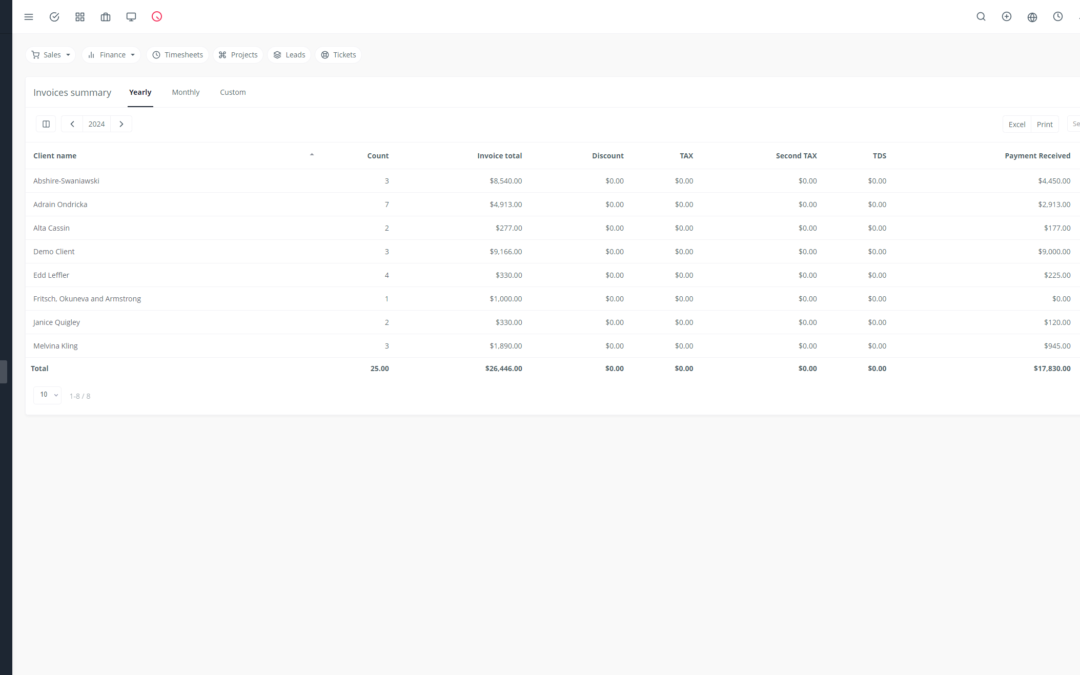Customer support is crucial for the success of any SaaS business. A positive customer experience can retain users, increase revenue, and enhance your brand reputation.
However, many companies make common mistakes that hurt their customer service. In this article, we will explore 20 errors to avoid to deliver an exceptional SaaS customer experience. 🚀
1. Responding Too Slowly to Requests 🐢
Waiting is the worst enemy of customer satisfaction. A long response time can frustrate customers and drive them to competitors.
Solution:
Set clear SLAs (Service Level Agreements) for response times.
Invest in live chat and messaging tools for instant replies.
Implement a ticketing system for efficient request management.
2. Lack of Personalization in Interactions 🤖
Customers want to feel unique and appreciated. Generic and impersonal interactions don’t contribute to building a lasting relationship.
Solution:
Use the customer’s name in interactions.
Personalize messages based on interaction history.
Offer solutions tailored to each customer’s specific needs.
3. Using Incomprehensible Technical Language 🤯
Technical jargon can be a major obstacle to understanding for non-expert customers.
Solution:
Simplify your language.
Use clear and concise terms.
Provide simple explanations and analogies to illustrate technical concepts.
4. Neglecting Important Communication Channels 📵
Don’t overlook your customers’ preferred communication channels.
Solution:
Be present on social media and online forums.
Offer support via email, live chat, phone, and social media.
Regularly monitor customer feedback and questions on these platforms.
5. Delivering a Fragmented Experience 🧩
A fragmented customer experience, where customers have to repeat themselves with each interaction, is frustrating.
Solution:
Centralize customer information in a CRM system.
Ensure seamless transitions between communication channels.
Offer consistent and unified follow-up, regardless of the channel used.
6. Lacking Proactivity and Anticipation of Needs 🔮
Preventing problems before they arise is a winning strategy.
Solution:
Analyze customer data to identify pain points.
Offer proactive resources and tutorials to facilitate product usage.
Anticipate customer needs and offer solutions before they even ask.
7. Lack of Clarity in Processes and Procedures 🧭
A lack of clarity in processes and procedures can lead to errors and frustrations.
Solution:
Clearly document your processes and procedures.
Offer guides and tutorials for customers and agents.
Ensure processes are consistent and easy to follow.
8. Not Tracking Customer Conversations 🕵️♂️
Tracking customer conversations is essential to providing personalized service.
Solution:
Use a ticketing system to log conversations.
Take notes on customer requests, solutions, and preferences.
Use this information to personalize future interactions.
9. Poor Expectation Management 📉
Unrealistic expectations can lead to disappointment.
Solution:
Be transparent about the product’s features and limitations.
Clearly communicate timelines for resolving issues.
Set realistic and achievable expectations for customers.
10. Lack of Creative Problem-Solving 💡
Don’t settle for generic solutions. Find innovative solutions for customers’ specific problems.
Solution:
Encourage agents to think creatively and come up with original solutions.
Use customer feedback to improve your products and processes.
Be open to experimentation and adapting your solutions.
11. Not Acknowledging Mistakes and Apologizing 🗣️
Admitting your mistakes and apologizing to customers is crucial for regaining their trust.
Solution:
Quickly acknowledge errors and offer apologies.
Provide compensation for inconveniences caused.
Demonstrate your willingness to improve your processes to prevent future mistakes.
12. Not Measuring Customer Satisfaction 📊
Measuring customer satisfaction is essential for identifying areas for improvement.
Solution:
Send out customer satisfaction surveys.
Track ticket resolution rates and response times.
Analyze customer feedback on social media and online forums.
13. Lack of Agent Training and Resources 📚
Poorly trained agents can’t provide quality customer service.
Solution:
Offer regular training for your agents.
Provide them with guides and resources to answer customer questions.
Create a culture of learning and continuous improvement within your team.
14. Not Using the Right Tools and Technologies 🧰
The right tools and technologies can enhance customer support efficiency.
Solution:
Invest in ticketing systems, live chat tools, CRMs, and automation tools.
Choose tools that are appropriate for your needs and the size of your business.
Ensure tools are user-friendly and easy to integrate.
15. Not Being Transparent About Pricing and Terms 💰
Transparency is essential for building customer trust.
Solution:
Clearly publish your pricing and terms and conditions.
Be honest about fees and product limitations.
Offer flexible and transparent billing options.
16. Not Offering Multi-Language Support 🌎
Offering support in multiple languages is crucial for reaching a global market.
Solution:
Provide support in the languages spoken by your customers.
Hire multilingual agents or use translation tools.
Ensure consistent communication across all languages.
17. Lacking Empathy and Understanding 😭
Empathy is essential for building a connection with customers.
Solution:
Put yourself in your customers’ shoes and try to understand their frustrations.
Listen attentively to customers’ requests and problems.
Demonstrate your willingness to help them find a solution.
18. Not Being Available Outside Business Hours ⏰
Customers need support at all times.
Solution:
Offer support via email or live chat 24/7.
Provide a comprehensive FAQ and online self-help resources.
Use automation tools to answer simple questions outside of business hours.
19. Not Having an Effective Ticketing System 🎫
An effective ticketing system is essential for managing requests.
Solution:
Use a ticketing system to organize requests and prioritize them.
Ensure the system allows customers to track the progress of their requests.
Use the system to gather data on request types and resolution times.
20. Not Offering Self-Help Resources 📚
Customers often prefer to find answers to their questions themselves.
Solution:
Create a comprehensive knowledge base with help articles, tutorials, and FAQs.
Offer a community forum for customers to help each other.
Integrate an efficient search system on your website so customers can easily find the information they need.
Conclusion
By avoiding these 20 common mistakes, you can deliver an exceptional SaaS customer experience and retain your users. Remember that the key to success lies in clear communication, personalization, proactivity, and empathy. 😊

